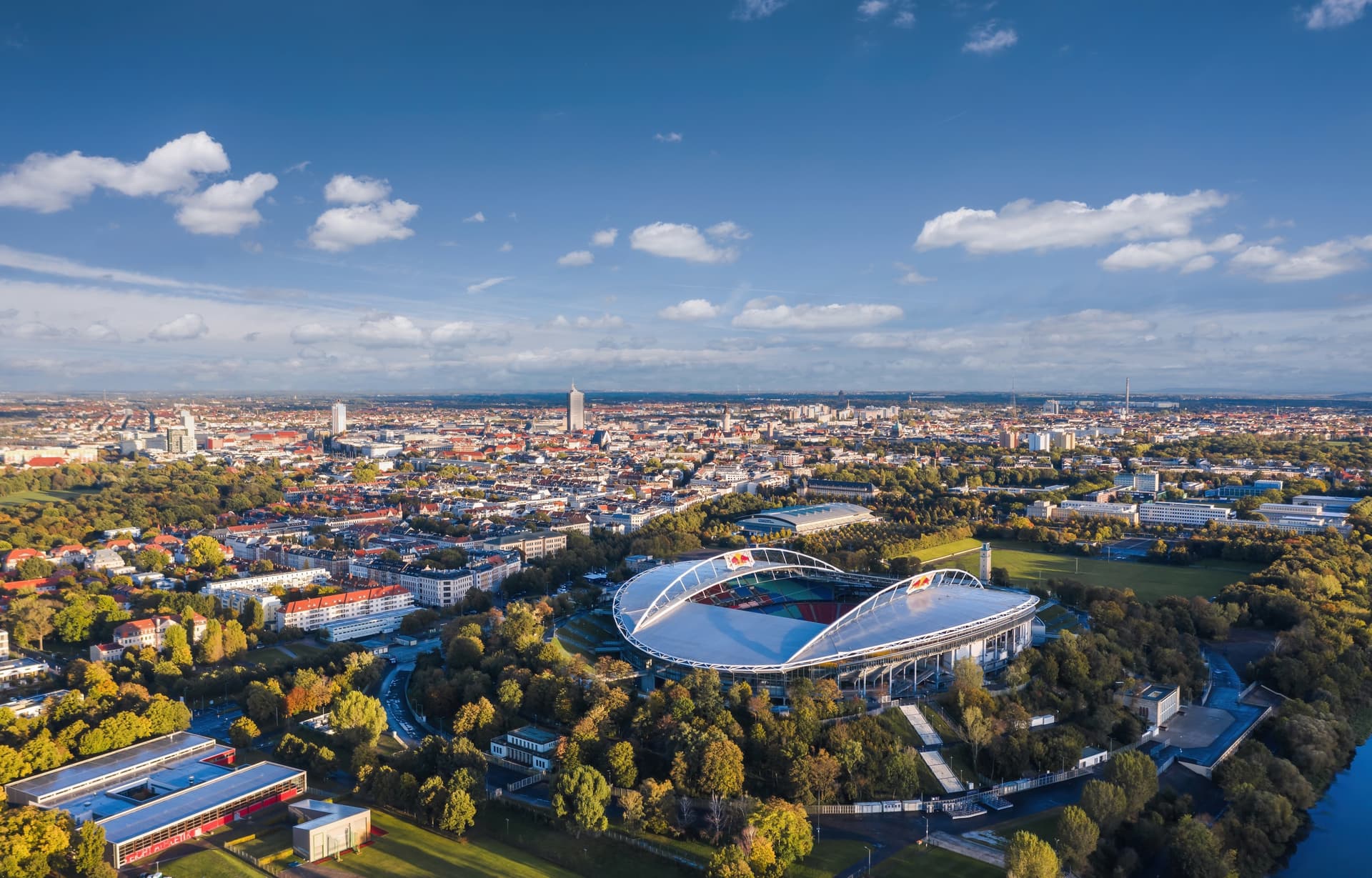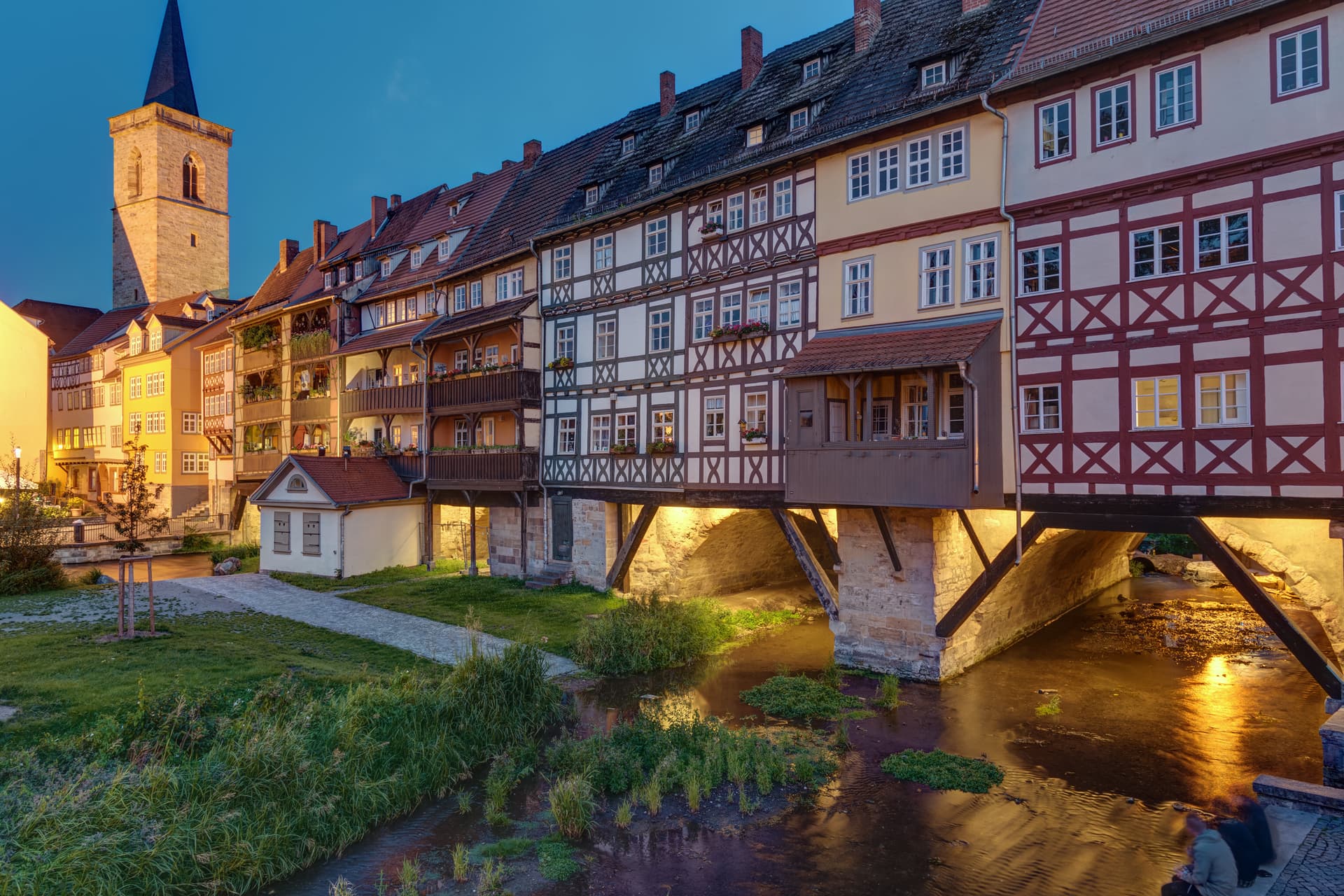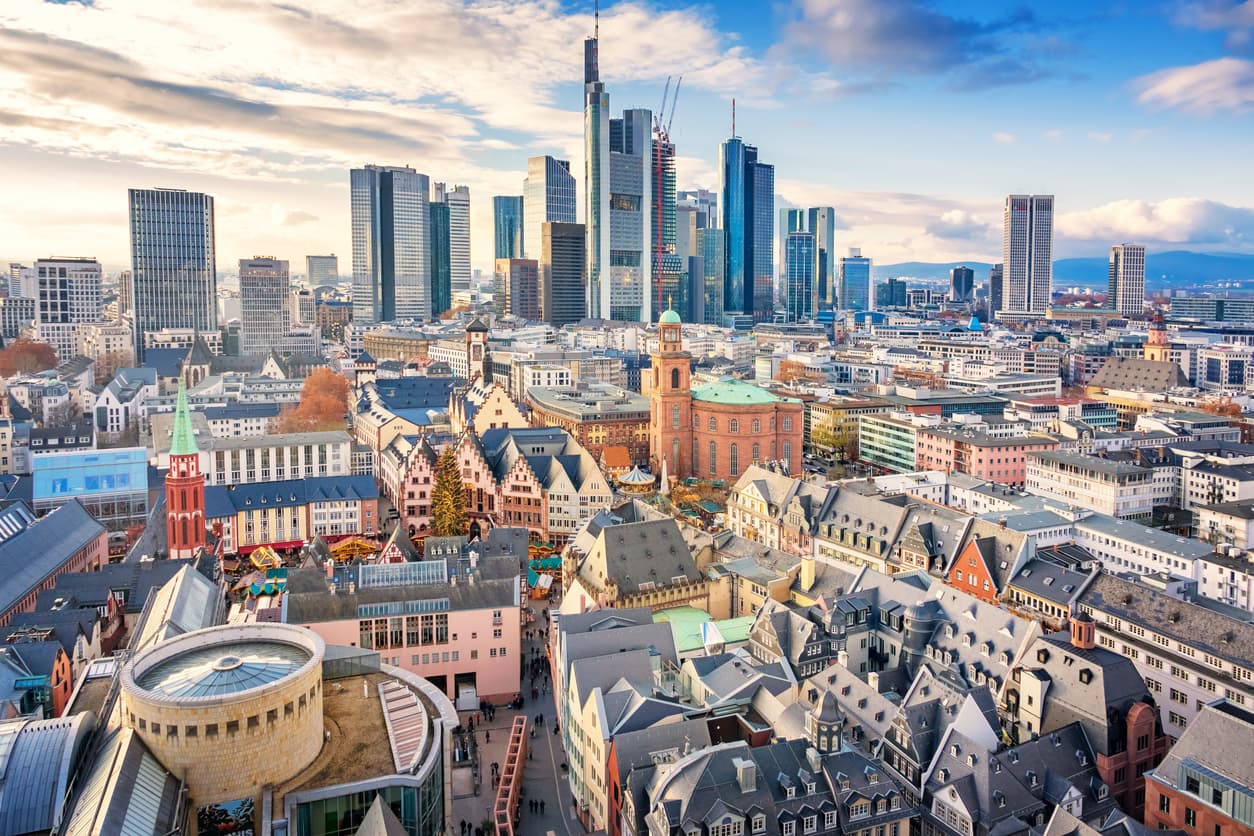
Knowledge

Leipzig under the magnifying glass: market value development and opportunities for property buyers
Leipzig is booming with charming historic buildings, a vibrant creative scene, and affordable real estate prices, the city is attracting more and more buyers. Compared to Munich & Co., Leipzig offers a top price-performance ratio.
Continue reading
Berlin Introduces Mandatory Solar Panels as of 1 January 2023
Berlin’s Senator for the Economy, Energy and Public Enterprises, Ramona Pop (Greens), had submitted the draft bill for a solar energy act in late 2020, and it has now completed its legislative process.
Continue reading
Residential real estate – how much room for growth is left?
Residential investments will remain attractive in future, as the ACCENTRO Homeownership Report and the forecast by immo.analytics GmbH for 2023 have recently confirmed.
Continue reading
New “Climate Plus” Strategy of Federal Association of German Housing and Real Estate Companies (GdW) Combines Climate Change Mitigation with Social Peace
The WohnZukunftsTag is an annual conference organised in Berlin to discuss the challenges of Germany’s housing industry.
Continue reading
Deutsche Hypo Survey Shows: Green Buildings Are Gaining Ground
According to a survey compiled by Deutsche Hypo Real Estate, so-called “green buildings” are becoming more and more popular. Rising demand on the investment market is attributed at least to some extend to the Green Deal passed by the European Union.
Continue readingBerlin's Rent Cap is Unconstitutional
After a year filled with talks and debates, it just became official: Berlin’s rent cap violates the German constitution. It was struck down by the Constitutional Court (BVerfG) in Karlsruhe, Germany’s top court.
Continue readingGermany's cities and neighborhoods

Which of the two offers the higher quality of living: the city or the countryside? Naturally, opinions are divided on the subject. Which explains why German cities and localities are bustling with activity. Some people are moving to the city, other are leaving it for the countryside. Which of the two offers a better life? Which cities and regions will be particularly attractive in the future? What will properties (have to) look like in order to be as climate-friendly and sustainable as possible? And what is the upshot of all these deliberations for the real estate industry and for investors? You will find the answers to all these questions right here.
All articles
- Leipzig under the magnifying glass: market value development and opportunities for property buyers
- Residential real estate – how much room for growth is left?
- Deutsche Hypo Survey Shows: Green Buildings Are Gaining Ground
- Berlin Introduces Mandatory Solar Panels as of 1 January 2023
- New “Climate Plus” Strategy of Federal Association of German Housing and Real Estate Companies (GdW) Combines Climate Change Mitigation with Social Peace
- Berlin's Rent Cap is Unconstitutional
- Berlin’s Rent Cap Causes Housing Supply to Shrink
- Rapid Price Growth for New-Build Condominiums in Berlin
- Which Cities will Keep Growing after the Crisis?
- Berlin’s Rent Cap Puts a Dent in Housing Supply
- Berlin Takes Top Spot among European Real Estate Locations
- Regions in North Rhine-Westphalia and East Germany Follow Upward Trend
- Housing Shortage Drives up Rents in Berlin’s Gravy Belt
- Up-and-Coming Regions Concentrated in East Germany
- More Rental Flats under Construction in Berlin than Condominiums
- Despite Coronavirus Crisis: Condominium Prices Remain Stable
- In Stockholm, Rent Cap Created Booming Black Market
- Prospering Metro Region Berlin-Brandenburg
- City Ranking: Berlin is Germany’s Most Dynamic City
- Fewer and Fewer Planning Permissions in Berlin
- Still Plenty of Potential in Class B Cities
- Berlin and Munich among the World’s Finest Investment Destinations
- Hamburg Leading the Way in Housing Construction
- Housing Construction in Major German Cities far too Slow
- Building Offices Preferable to Housing Construction in Berlin
- Berlin’s Periphery Getting Seriously Expensive
- Germany 2035: Leipzig the Fastest Growing City
- Zoning New Building Land in Berlin Has High Hurdles to Jump
- Berlin Builds Fewer Flats than Planned
- Historic District Protection Areas Jeopardise Investments in Residential Accommodation
- In Many German Cities, Rents have Become more Affordable
- Berlin’s Government Lacks Overview of Gap Sites
- No Signs of Relief on Berlin’s Housing Market
- Berlin’s Lord Mayor Wants to Intensify Focus on Tenant Protection
- Housing Shortage Slows Market Dynamics in Berlin
- Rents in Germany are Surging, Especially in Berlin
- Senate of Berlin Falls Well Short of Housing Construction Target
- Surge in Residential Rents in Berlin
- Berlin’s Mayor Champions a More Investor-Friendly Housing Policy
- Senate of Berlin Moves to Toughen Landlord-Tenant Law
- Shrinking Residential Development Volumes in Germany’s Metropolises
- Greater Berlin Still Has Land Reserves for 218,000 Flats
- Berlins housing prices are steadily increasing
- Berlin registers the strongest price increase for home ownership
- Berlin Senate Wants to Accelerate Residential Construction
- Berlin and Leipzig register strong increases in rent
- City Hall Rethinking Berlin’s Housing Policy
- Berlin Clearly Falls Short of Housing Construction Target
- Gutachten: Berliner Wohnungspolitik nicht im Einklang mit Landesverfassung
- Steigende Immobilienpreise in ausnahmslos allen Gemeinden rund um Berlin
- Fast Demographic Growth in the Berlin-Brandenburg Metro Region
- 50,000 New Rental Flats Planned in Berlin
- Berlin Housing Market: Peripheral Districts Getting Pricier
- Construction boom in Berlin: number of building permissions increase strongly
Table of contents
City, countryside, small town? What attracts people these days? 1.1 Country living: scenic or tedious? 1.2 Urban living: short distances, infinite possibilities 1.3 Germany’s most popular cities
The German housing market 2.1 Rental price trend in German 2.2 Berlin’s rent cap and its consequences 2.3 What is tenant protection? 2.4 Real estate price trend: buying rather than renting?
Climate change and its ramifications for the real estate industry 3.1 Sustainability in the buildings sector: green buildings gaining ground 3.2 Solar building obligation
City, countryside, small town? What attracts people these days?
You probably know both types: on the one hand, the true-blue urbanites who love the anonymity of the big city and could not live without cultural and leisure amenities right around the corner. On the other hand, you have people who mainly associate noise, frenzy and air pollution with city living. These appreciate the tranquillity of life in the country and prefer the greenery outside their door to repertory cinemas, theatres, bars and exotic restaurants any time.
City dwellers are clearly in the majority in Germany: 77 percent of all people live in cities or conurbations, whereas only 15 percent live in villages with population of 5,000 residents or less. For a long time, Germany experienced something of a rural exodus. Young people, more so than others, have gravitated toward the cities for decades, resulting in a significant geriatrification of rural regions, on the one hand, while having a sometimes dramatic impact on property prices in (major) cities, on the other hand.
In response to the persistently high selling prices and rents, however, the trend appears to have reversed itself to some extent lately. More and more people are leaving the (inner) cities to move further out, often settling in the suburbs but sometimes heading way out into the countryside.

Country living: scenic or tedious?
Retreating to the countryside has its charms: The idea of a house surrounded by greenery, a private garden, with forests and meadows just beyond, is tempting for many.
Country living has an idyllic ring to it – and it is often matched by reality. Especially for people who love to spend time outdoors or who have small children, the rural lifestyle has many advantages: fresh air, greenery nearby, keeping pets much easier than in the city, while land prices or property rents are usually more affordable, putting the dream of your own herb or vegetable garden within much easier reach than the city will.
According to a survey from 2021, one in eight respondents among 18,000 city dwellers polled are planning to move out of the city and into the countryside over the next twelve months. Out of this group, 46 percent stated that their plans to move relate to the coronavirus crisis. It stands to reason that people crave more living space and a private garden during lockdown times. That said, country living is also becoming more appealing because of the advancing digitisation and the expanding options for working from home, both trends having been expedited by the pandemic.
After all, one of the main shortcomings of living in the countryside used to be the conspicuous lack of career options, often necessitating commutes to cities near and far. And the need to travel long distances is not limited to the commute to work. Shopping venues, cultural and leisure attractions all tend to be much farther away than they are in the city. Since public transportation is often poorly developed in remote areas, their residents often need a car to get around. Indeed, the currently high petrol prices and sustainability considerations may have kept many of those who wanted to leave the city from moving out too far.
Urban living: short distances, infinite possibilities
By contrast, city dwellers tend to benefit from short distances, be it to go to work, to the doctor’s, to the nearest supermarket or to see friends. Everything is right around the corner, except greenery perhaps. The option to head out of the city on weekends appears much less strenuous for many than the idea of having to commute in and out of the city to work and to get stuck in traffic en route.
While it can be hard to socialise in the country and takes some time to make friends, urbanites benefit from a more open cultural ambience that principally welcomes everyone. Especially people who do not “fit the mould” because they have exotic names, look different or dress flamboyantly often feel more at home in large cities. On the one hand, they appreciate the urban anonymity, and, on the other hand, the greater chances to meet and network with peers.
Their diversified cultural and leisure amenities of cities represent yet another aspect contributing to their high liveability: Feel like seeing a play, a film, or an opera on the weekend? Fancy a concert after work, or browsing small owner-operated boutiques with finery available nowhere else? And trying out the Lebanese place rather than settling for the usual pizza or burgers? There is so much to choose from in the city. And this is true not just for leisure activities but even for the choice of city as such: Where do Germans most like to live?

Germany’s most popular cities
It is a question that keeps editorial offices and research institutes guessing – and their answers rarely match. In 2022, The Economist ranked Frankfurt am Main seventh in its global city ranking, declaring the metropolis in the state of Hesse Germany's most liveable city.In another ranking, the Niveauranking 2021 by the business weekly Wirtschaftswoche, Frankfurt only scored fifth place among the German cities. It awarded the top spot to the Bavarian state capital of Munich, followed by Erlangen, Ingolstadt, and Stuttgart, in that order.
But in addition to wondering which place is currently most liveable, it is just as interesting to see where people will want to live in the future. Cities in eastern Germany are credited with enormous potential – not least because their property prices remain lower than the prices quoted in western Germany. Booming Leipzig tops the list in this context with its robust labour market and a demographic growth that could make it the fastest-growing city between now and 2035.At the same time, you have up-and-coming cities in North Rhine-Westphalia, and they keep gaining in popularity. What attracts people to certain regions is often the relatively low-price level, but in line with the principle of supply and demand, it is precisely their arrival that will start driving up rents and prices.

The German housing market
As diverse, cosmopolitan, and colourful life in the city may be, it comes at a price. Indeed, one of the main drawbacks of urban living for many is the upward trend in residential property prices. The development is, of course, cause for joy among owners and investors. Nor have they reason to worry that the trend may end, not even in the wake of the coronavirus crisis.Although the idea to retreat to the countryside has gained in appeal since the outbreak of the pandemic, pent-up demand for urban housing remains sizeable enough to assume that Germany’s cities will resume their growth after the end of the crisis.
Rental price trend in Germany
Rent rates for German properties have soared in recent years. The pace of the rental growth differs between regions and from one city to the next. Nowhere have rates increased faster than in the metro regions, and the growth has extended well beyond the inner cities. The rent growth leader among the metropolises is Berlin. Here, residential rents more than doubled over the past ten years. Meanwhile, rent rates on Berlin’s periphery increased by 17 percent within a year. And rates keep going up, because demand is enormous. While it is true that more rental flats than ownership apartments are being developed in Berlin, the housing shortage is so dire that the demand back-log is no doubt here to stay.
With a rental uplift by 112 percent between 2020 and 2020, Berlin is an extreme case, but brisk growth was also registered in cities like Munich (69 percent) and Würzburg (60 percent). Even the German cities with the slowest growth (Salzgitter, Hagen, Halle an der Saale, Remscheid, and Chemnitz) reported rent hikes between 13 and 20 percent.

Berlin’s rent cap and its consequences
By 2020, the housing market in Germany’s first city was under such strain that city hall felt it could not just keep watching from the side-lines. On 23 February 2020, a rent control measure colloquially called the rent cap entered into force in Berlin. The idea was to halt the upward rent growth by freezing rent rates at the level of 18 June 2019 and by imposing a rent limit on future leases for a period of five years. However, the Federal Constitutional Court ruled Berlin’s rent control measure unconstitutional on 15 April of the following year, causing it to be rescinded with immediate effect.
Apart from the legal aspect, the drastic consequences of Berlin’s rent cap on the housing market failed to have the intended effect during the 14 months it was in force – on the contrary. Within a year, the housing supply available on the market contracted by around 41.5 percent, as many owners decided that the imposed cap made it unattractive to re-let their apartments. Instead, many owners decided to sell their apartments.
Thus, the rent cap turned out to be a complete flop, not only failing to increase the stock of affordable rental housing but exacerbating the pent-up demand on Berlin’s housing market by deepening the shortage.
Worse yet, the rent cap also slowed Berlin’s efforts to achieve its climate change targets. That is because the objective to make the federal capital carbon-neutral by 2050 depends decisively on the refurbishment of existing residential buildings. Such refurbishments imply considerable capital expenditures for property owners, costs they were largely unable to recover from their tenants because of the rent cap. As owners were stuck with the bulk of the refurbishment costs, the rent cap became such a formidable obstacle that energy refurbishment measures had to be put on the back burner.

What is tenant protection?
Berlin’s rent cap flopped and was relegated to the dust bin of history in 2021. But it was, of course, not the first time that rent control measures for the protection of tenants were introduced. In fact, the first tenant protection dates to 1917, more than a century ago. Even without the rent cap, there are measures and provisions in place that are meant to protect tenants from no-cause termination or rent reviews by the landlord.
As far as the termination of a residential lease goes, tenants have different rights than landlords. While tenants with an open-ended lease agreement (the standard in Germany) may give three months’ notice without stating their reason, the landlord’s notice period depends on the length of the tenancy and a reason must be provided for the termination.
Legitimate reasons for an ordinary termination on the part of the landlord include, for instance, intended owner-occupancy, economic reasons, or a breach of contract. Termination without notice is permitted after a tenant missed his or her rent payments for more than two months.
Tenant protection also seeks to prevent random rent increases at will. As a rule of thumb, rents should not be raised by more than 20 percent within a three-year period. In many German cities, the maximum rent increase permitted is 15 percent. Moreover, any rent increase requires the tenant’s written consent. Tenants who regard a given rent review as unjustified or excessive have the right to object to it.
The problem with tenant protection is often that regulations already in force are not or not fully observed. If nothing else, the above discussion of the rental price trend in Berlin illustrates the fact, because if existing rules had been complied with, there would have been no need to impose a rent cap.
Real estate price trend: buying rather than renting?
Life as a tenant is not always easy – and it is certainly not cheap. But is buying a home so much more affordable? While this is a question many people keep asking themselves, it is quite difficult to answer in a general sense. You need to remember that the drastic increase in property prices is not only reflected in rents. Prices for plots of land and for standing properties have also jumped up in recent years.
For one group of people, rising prices are the biggest drawback about city life and indeed a matter of financial survival. But those who invest in residential accommodation will also benefit from the recent unexpected price growth. Owners and landlords may rejoice not only over their high rental income but also over the fast-track appreciation of their property. It is another reason why owning real estate is considered a good inflation hedge, because while money, be it in cash or in accounts, will lose in value, the value of land, apartments and houses will keep going up.

At present, Berlin is considered the best real estate location in Europe, and there is ample evidence that this goes not just for the inner city anymore.Even the city’s peripheral districts have registered significant price hikes.
Interim conclusion: Anyone having the financial means can hardly go wrong by investing in residential freehold property. Especially the currently still affordable Class B region offer enormous growth upside – regardless of whether you intend to owner-occupy or let a given property.If you are worried that the upward trend is gradually nearing its end, you will be glad to learn about the findings of the ACCENTRO Homeownership Report, which was published in its 15th edition in 2021.The report confirmed the persistent appeal of residential property investments, as did a forecast by immo-analytics GmbH for the year 2023.

Climate change and its ramifications for the real estate industry
The role that the buildings sector plays in the context of the climate crisis and the climate targets of the German Government are not just reflected on Berlin’s housing market on occasion of the abortive rent cap. After all, the German housing stock is supposed to be carbon-neutral by 2050. The effort will, to say it again, require massive capital expenditures, but will also figure prominently in the construction of new buildings.
Sustainability in the buildings sector: green buildings gaining ground
The climate crisis can no longer be ignored, and with extreme weather now having become a regular occurrence even in Germany, many tenants and property owners are aware of the issue. The German population in general is developing a more mindful approach to sustainability that is reflected not least in the real estate industry.
As a result, sustainable buildings, also called green buildings, meet with growing acceptance, according to a survey published by Deutsche Hypo. The survey suggests that the coming years will see a fast increase in demand for sustainable real estate, and the shift will soon become visible in changing cityscapes.
There is no legally binding definition of the term “green building,” but its significance obviously centres on the lowest possible energy and resource consumption and the reduction of the environmental footprint of a given property. Ways to achieve these objectives include the use of renewable energies and recyclable raw materials such as cork. Ideally, a so-called “cradle-to-cradle” approach will not limit itself to the construction phase but take the entire life cycle of a building into account, from its planning all the way to its demolition. It will even seek to improve the overall efficiency of the building, for instance by reducing vacancies and by preserving the intrinsic value of properties. Harmful consequences for human health are to be minimised by green buildings, while the liveability for occupiers is to be enhanced.

Solar building obligation
Renewable energies make a significant contribution in the struggle for climate change mitigation, and much is done therefore to expand their use and supply. Here as elsewhere, the buildings sector plays a special role because 20,183 square kilometres in Germany are built up with structures for residential, industrial and commercial use (as of 2021). This area lends itself potentially to the installation of solar arrays for generating renewable power. In some places, it has already become mandatory to do so, at least with newly constructed buildings. Regulations in this context differ significantly from one region to the next.
In 2006, Waiblingen in Baden-Württemberg became the first German city to make the installation of solar systems mandatory for new buildings. Since then, many municipalities and states have followed the example. Hamburg became the first German state to prescribe the installation of photovoltaic systems on rooftops as of 2023. Mandatory solar system installation was also adopted by Berlin, another city state, in 2021 that will apply to new residential and non-residential buildings as of 2023.
The new regulation even includes private owners and existing buildings in the German capital. Exempt from the new rule will be buildings whose effective floor area is smaller than 50 square metres and properties that are ineligible for the installation of solar arrays for technical reasons. Wherever possible, the solar array must cover at least 30 percent of the roof surface. This is to ensure that 25 percent of Berlin’s electricity requirement are generated using solar energy by 2050, which would save 37,000 tons of CO2 annually.
While these figures are likely to please environmentalists, others are sceptical. Critics of the measures worry that the new regulations will be implemented at the expense of tenants by prompting dramatic increases in residential service charges.
Among the stakeholders trying to figure out the best way to reconcile carbon neutrality and affordable housing is the Federal Association of German Housing and Real Estate Companies (GdW). At the annual WohnZukunftsTag conference in 2021, this trade association presented its “Climate Plus” concept, which promises to make carbon-neutral housing affordable in a three-step approach. Step one of the concept is an approximate neutralisation of the rent inclusive of heating in order to limit the burden on tenants. A second step is supposed to oblige landlords to raise rents exclusively in line with a previously defined index, and to do so over an extended period of time.
Finally, a carbon-cutting corridor is to keep capital expenditures toward climate change mitigation measures down to the scope of what is required.
Conclusion
German cities and localities are bustling with activity. Some people wish to leave the city for the countryside, while others head in the opposite direction. Property rents and prices are as high as ever, and some benefit from the fact whereas it creates serious challenges for others, sometimes even threatening their livelihoods.
The body politic is also striving to exert influence on the major issues of our times, for instance by intervening in the runaway growth of rents and seeking to curb the progressive consequences of climate change. Like with everything, there are two sides to the measures to control the real estate sector, where the interests of tenant protection can be at odds with the needs of climate change mitigation. However, in the same way that innovative and sustainable construction methods are becoming standard, new residential and rental concepts will emerge, too.
There are plenty of options and solutions for our cities and localities, we just need to find them.

For these and other topics involving real estate, browse our knowledge blog at: https://accentro.de/en/knowledge

Residential real estate – how much room for growth is left?
Residential investments will remain attractive in future, as the ACCENTRO Homeownership Report and the forecast by immo.analytics GmbH for 2023 have recently confirmed.
Continue reading
New “Climate Plus” Strategy of Federal Association of German Housing and Real Estate Companies (GdW) Combines Climate Change Mitigation with Social Peace
The WohnZukunftsTag is an annual conference organised in Berlin to discuss the challenges of Germany’s housing industry.
Continue readingRapid Price Growth for New-Build Condominiums in Berlin
Two surveys conducted by the Bulwiengesa research institute in late 2020 revealed that prices for new-build condominiums in the inner city of Berlin have soared drastically.
Continue readingBerlin Takes Top Spot among European Real Estate Locations
No other real estate location in Europe offers investors long-term opportunities as robust as those in the German capital.
Continue reading
Deutsche Hypo Survey Shows: Green Buildings Are Gaining Ground
According to a survey compiled by Deutsche Hypo Real Estate, so-called “green buildings” are becoming more and more popular. Rising demand on the investment market is attributed at least to some extend to the Green Deal passed by the European Union.
Continue readingBerlin's Rent Cap is Unconstitutional
After a year filled with talks and debates, it just became official: Berlin’s rent cap violates the German constitution. It was struck down by the Constitutional Court (BVerfG) in Karlsruhe, Germany’s top court.
Continue readingWhich Cities will Keep Growing after the Crisis?
The coronavirus crisis has changed the world in many ways. International migration flows, for example, have slowed down significantly in 2020, and this in turn is likely to have drastically slowed the demographic growth in Germany this year.
Continue readingRegions in North Rhine-Westphalia and East Germany Follow Upward Trend
The housing markets of several major cities in North Rhine-Westphalia and in the eastern German Länder stood out last year with a particularly robust performance.
Continue reading
Berlin Introduces Mandatory Solar Panels as of 1 January 2023
Berlin’s Senator for the Economy, Energy and Public Enterprises, Ramona Pop (Greens), had submitted the draft bill for a solar energy act in late 2020, and it has now completed its legislative process.
Continue readingBerlin’s Rent Cap Causes Housing Supply to Shrink
Capping Berlin’s residential rents was supposed to prevent unchecked rental growth. But an analysis by the ImmobilienScout24 real estate portal just found that the total number of rental housing listings in Berlin declined by 41.5 percent year on year.
Continue readingBerlin’s Rent Cap Puts a Dent in Housing Supply
Between September 2019 and September 2020, the number of rental flats available in Berlin has decreased by 41.5 percent. This is the upshot of an analysis run by the ImmobilienScout24 real estate portal.
Continue readingHousing Shortage Drives up Rents in Berlin’s Gravy Belt
The consequences of keen demand for housing in Berlin are increasingly felt in the districts surrounding the city. This is the upshot of a recent analysis conducted by the Immowelt real estate portal.
Continue reading